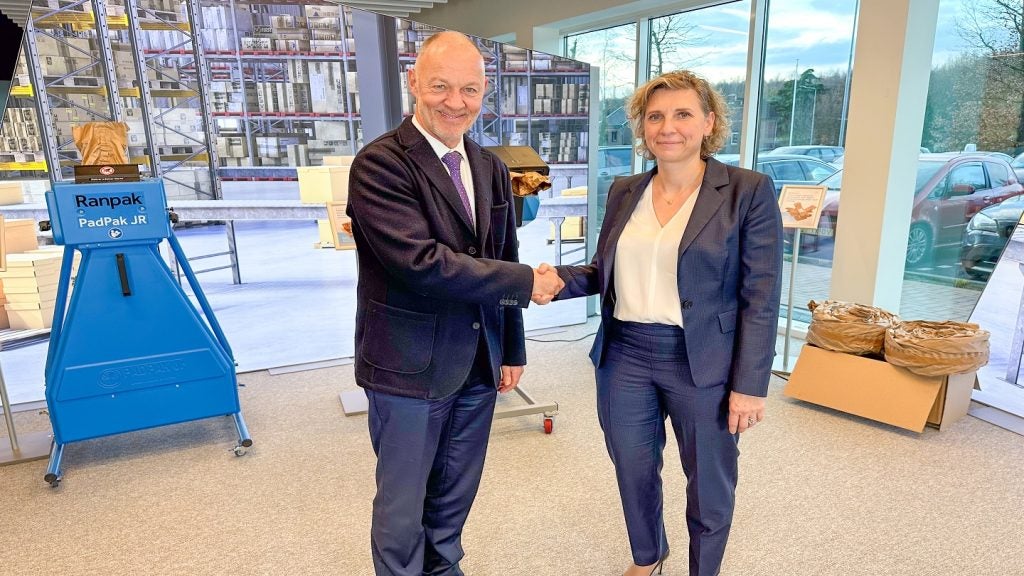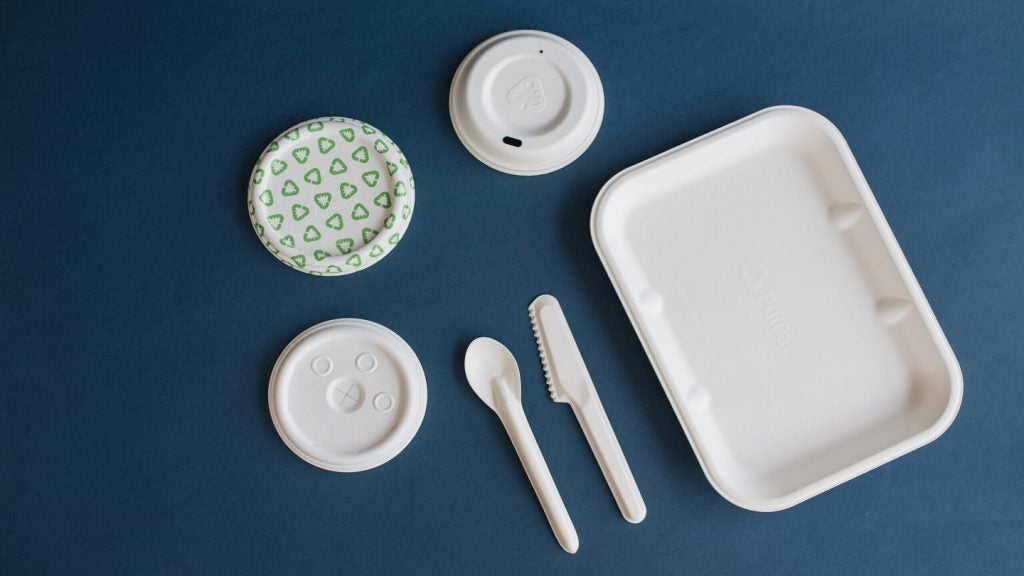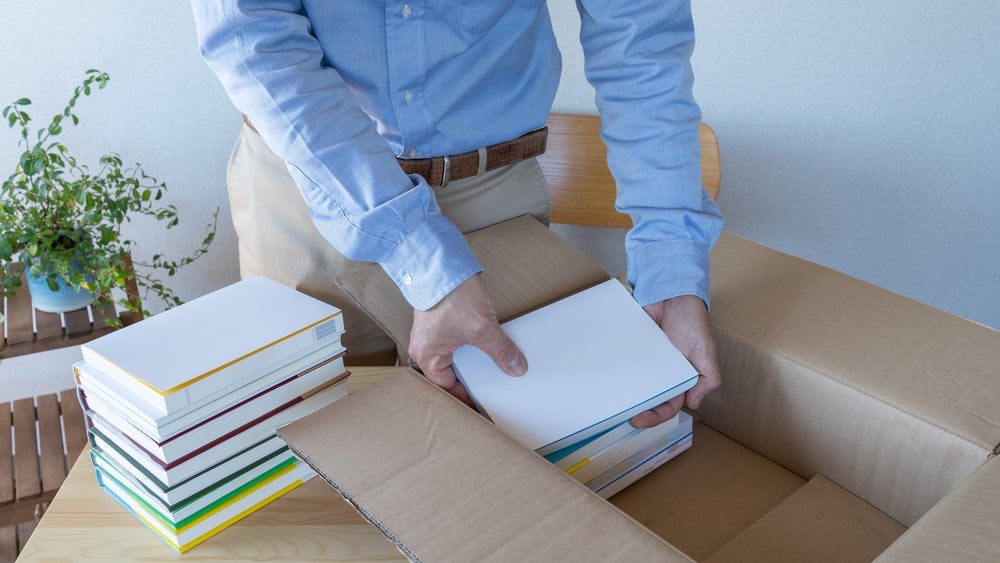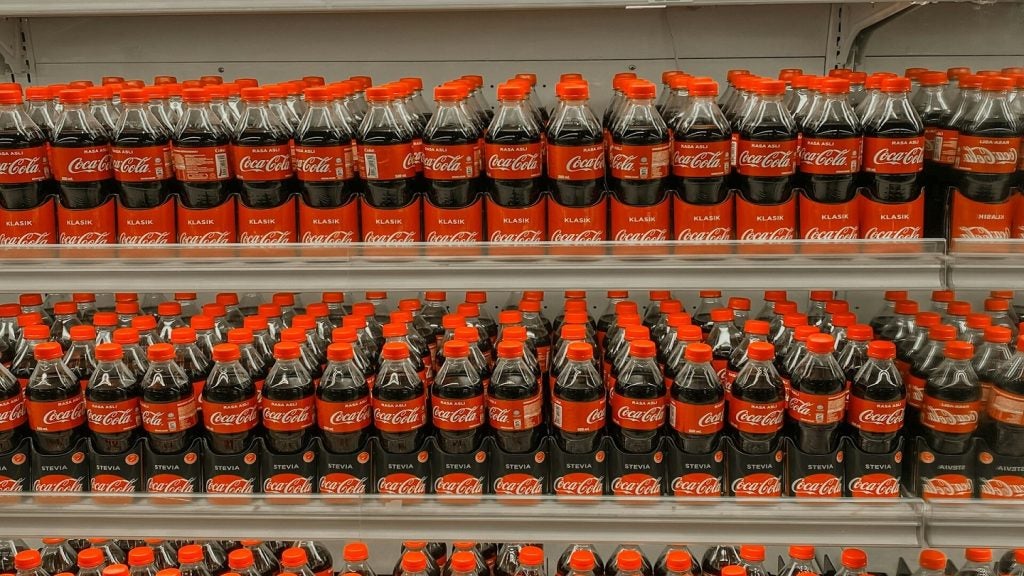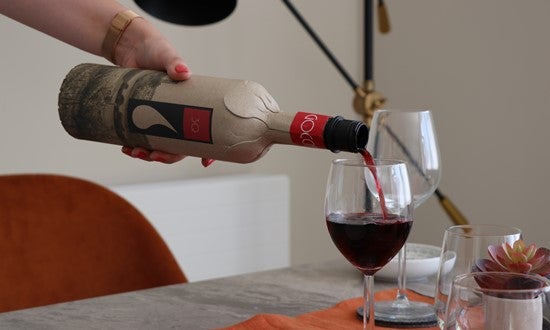
Today, UK-based sustainable packaging company Frugalpac announced the launch of Frugal Bottle, a recyclable wine bottle made from 94% recycled paperboard.
A statement released by the company said that the 75cl ‘Frugal Bottle’ is made from 94% recycled paperboard and a food-grade liner to hold the spirit. The statement also said that the Frugal Bottle can be refrigerated, is comparable to the cost of a labelled glass bottle, and can be easily re-recycled.
The bottle will be used to package Italian vineyard Cantina Goccia’s red wine ‘3Q’, described as an “unwooded Sangiovese red with a hint of Merlot and Cabernet Sauvignon.”
Response to the launch
Frugalpac chief executive Malcom Waugh said: “Our mission is to design, develop and supply sustainable packaging. The Frugal Bottle is up to five times lighter than a glass bottle, has a carbon footprint up to six times lower and is easy to recycle again.
“We’ve had fantastic feedback from people who’ve trialled the Frugal Bottle. As well as the superior environmental benefits, it looks and feels like no other bottle you have ever seen. We want to deliver great wine and spirits in innovative packaging whilst helping our customers and consumers reduce their impact on the environment.”
Cantina Goccia owner Ceri Parke said: “We’re delighted to be making history with the most sustainable wine bottle in the world. For us, the Frugal Bottle is about achieving a considerably more sustainable form of packaging for an industry crying out for innovation. It will help us decarbonise the drinks industry.
How well do you really know your competitors?
Access the most comprehensive Company Profiles on the market, powered by GlobalData. Save hours of research. Gain competitive edge.

Thank you!
Your download email will arrive shortly
Not ready to buy yet? Download a free sample
We are confident about the unique quality of our Company Profiles. However, we want you to make the most beneficial decision for your business, so we offer a free sample that you can download by submitting the below form
By GlobalData“When some of our top hotel customers saw samples of our paper wine bottle, there was no hesitation in their minds that this type of bottle would be well received in their dining rooms. The launch of the Frugal Bottle is a big leap in sustainability without compromising wine quality.
“It’s much lighter than glass, easier to transport and friendlier to the planet. Just as important, our wine still tastes as wonderful in a paper bottle as it does in glass.”
The advantages and disadvantages of a paper bottle
According to Frugalpac, the Frugal Bottle is lighter than a glass bottle, better for the environment, has a carbon footprint up to 84% lower than a glass bottle, is easy to recycle, and uses less plastic than a plastic bottle.
In being lighter, a paper bottle is easier to carry and lighter to transport, which means pollution caused by transportation is lower when compared with glass.
In addition to this, the Frugal Bottle is made from recycled paperboard. Paperboard is ecologically beneficial as, in general, the paper recycling process releases 70% less carbon dioxide into the atmosphere than wood pulp, also, materials used to make paper can be sourced from sustainably managed forests and paperboard in particular is readily recyclable and compostable, making it biodegradable.
However, fibres that are used in paper material can not be endlessly recycled according to US-based packaging company World Centric. The company on its blog noted that any material derived from trees is ecologically damaging and that every time recycled paper is reused it is chemically treated in order to remove inks and impurities. This means that the material loses strength after five to seven times in recycling and ends up in landfill.
The advantages and disadvantages of a glass bottle
Like paper, glass is fully recyclable. It can also be endlessly reprocessed with no loss of quality, according to England’s national recycling campaign RecycleNow. Glass is also a highly recycled material, with an average recycling rate of up to 80%, according to Glass Alliance Europe, while paper recycling rate is at 66.2%, according to Recycling Today.
However, due to the heaviness of the material, transport emissions are high and glass can only be recycled in furnaces which use high energy in order to reach high heat, thus emitting pollution. Furthermore, glass is made from sand, soda ash, limestone, and other additives. These materials needed to produce glass have to be quarried, which is a process that creates visual pollution and destroys wildlife habitats.



